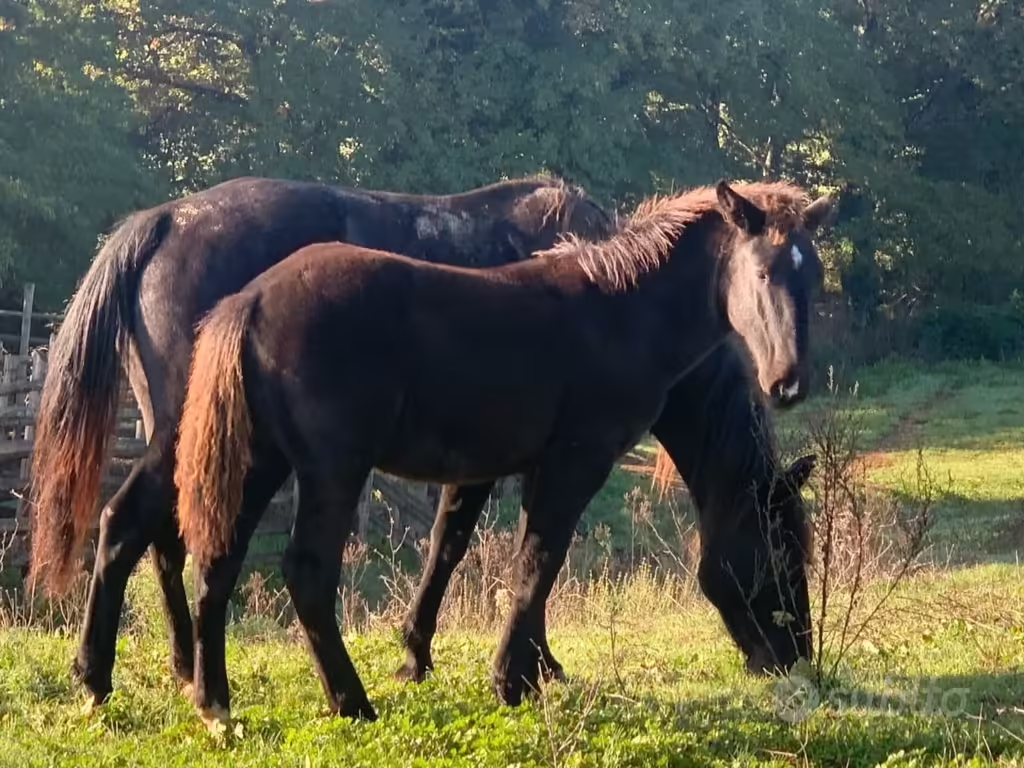The Cavallo Romano della Maremma Laziale, also known as the Maremma Laziale Horse,
Historic and distinctive breed of horse that hails from the Maremma region of central Italy, specifically from the areas of Lazio and Tuscany. Known for its hardiness, strength, and versatility, this breed has deep roots in Italian agricultural and pastoral traditions, and it plays an important role in the local culture and economy.
Origins and History
The Cavallo Romano della Maremma Laziale has ancient origins, with some evidence suggesting that its ancestors may trace back to Roman times. The region of Maremma, which stretches along the Tyrrhenian Sea between Tuscany and Lazio, has been home to a variety of equine breeds for centuries. The harsh conditions of this coastal area, with its hot summers and humid winters, made it a tough environment for both horses and humans, requiring animals that were resilient, adaptable, and capable of working in challenging circumstances.
Over the centuries, the breed was influenced by a variety of other horses, including the now-extinct Roman horses, Spanish horses brought by invaders, and perhaps even Arab horses, which were known for their stamina and agility. The result was a sturdy and hardworking breed well suited to the region’s specific needs, particularly in agriculture and herding.

Cavallo Romano della Maremma Laziale:
| Feature | Details |
|---|---|
| Origin | Maremma region (Lazio and Tuscany), Italy |
| Historical Influence | Ancient Roman horses, Spanish horses, possibly Arab horses |
| Height | 14.2 to 15.2 hands (approx. 142 to 155 cm) |
| Build | Medium-sized, muscular, compact body |
| Coat Colors | Bay, black, chestnut (other colors can appear) |
| Mane & Tail | Thick and full, characteristic of the breed’s striking appearance |
| Face | Straight or slightly convex, with alert, intelligent eyes |
| Temperament | Calm, intelligent, patient, reliable, alert |
| Primary Uses | Herding cattle, plowing fields, draft work, traditional agriculture |
| Historical Role | Workhorse for farming, transportation, livestock herding |
| Cultural Significance | Symbol of Maremma’s rural heritage, featured in festivals and events |
| Adaptability | Highly resilient, capable of working in harsh environmental conditions |
| Conservation Status | Efforts underway to preserve the breed, with renewed interest in modern use |
| Modern Uses | Recreational riding, trekking, continued use in traditional agriculture |
| Notable Features | Strong bond with handlers, ability to adapt to challenging environments |
Temperament and Behavior
The Maremma Laziale horse is known for its calm and even temperament. These horses are intelligent, alert, and reliable, making them excellent working animals for a variety of tasks. They are particularly valued for their patience and stamina, which makes them perfect for tasks like herding cattle, plowing fields, and carrying heavy loads.
One of the most notable characteristics of the breed is its ability to adapt to difficult conditions. The horses of the Maremma are accustomed to working in a harsh environment, often under the hot sun or in the marshy, muddy lands of the region. They are also known to have a strong bond with their handlers and the animals they work with, particularly when they are used for livestock herding.
Role in Agriculture and Culture
Historically, the Cavallo Romano della Maremma Laziale has been an essential part of life in the Maremma region. In the past, they were used as workhorses for farming and transportation, helping local farmers and herders with tasks like plowing, pulling carts, and moving goods across the challenging terrain. The breed was also used in traditional cattle farming, where they were employed to herd the famous Maremma cattle, a breed of cattle native to the region.
Aside from their agricultural role, the horses of the Maremma Laziale are also tied to the cultural identity of the area. They are often seen in festivals and traditional events, where they are celebrated as symbols of the region’s rural heritage. For example, the horses may participate in historical reenactments, agricultural fairs, or even in celebrations of local traditions.
Preservation and Modern-Day Use
In the past, the Cavallo Romano della Maremma Laziale faced a decline in numbers, particularly during the 20th century, as mechanization and modernization reduced the need for working horses in agriculture. However, in recent years, there has been a renewed interest in preserving this breed. Efforts to conserve the Cavallo Romano della Maremma Laziale have been supported by local breeders, animal conservationists, and cultural organizations, who recognize the breed’s historical significance and its value to local traditions.
Today, these horses are still used in traditional farming, and they are also increasingly found in recreational activities such as horseback riding and trekking. Their calm temperament and agility make them popular with riders who seek a reliable and well-behaved horse for both leisure and work.




